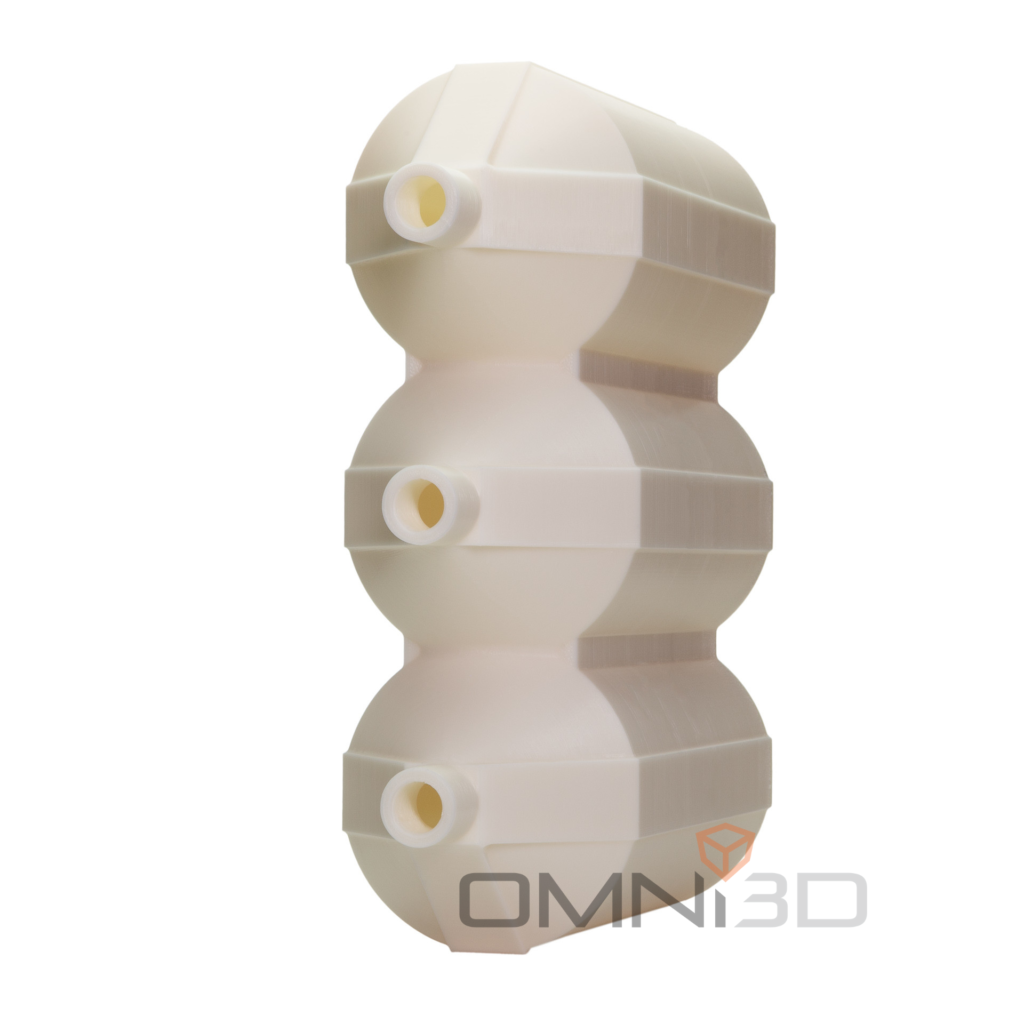
BioElectroCathode is an innovative project which aims to develop bioelectrosynthesis processes that can be used to convert carbon dioxide (CO2) into methane (CH4) or ethanol. The two main pillars of the project are the application of 3D printing technology for the production of electrochemical bioreactors and the development of methods to produce the cathodes necessary for the bioelectrosynthesis process. The entire process enables the conversion of CO2 into a biogas-like gas that can be used as fuel. Can 3D printing technology from Omni3D help produce the fuels of the future?
An international, Poland-Cyprus team of scientists in collaboration with Omni3D is working on a technology that in the future may help solve three major problems of today’s energy systems, related to energy storage, grid stability and CO2 emissions.
The BioElectroCathode project aims to innovate the biocatalysis of bioelectrosynthesis processes by:
- fabricating new cathodes,
- using 3D printing technology to create a MEBR reactor (3D-Microbial Electrosynthesis Baffle Reactor) capable of converting CO2 into methane (CH4) or ethanol.
What is the BioElectroCathode project about?
In the 3D printed bioreactor, optimal conditions are created for the growth of bacteria, which, stimulated by a small electrical charge flowing through the cathode, convert CO2 into methane or into ethanol.
The 3D print was prepared to provide the best possible fluid flow for the bioelectrosynthesis process with simultaneous separation of the resulting gases:

Cross-sectional view of 3D printed MEBR (3D-Microbial Electrosynthesis Baffle Reactor)
The energy carrier produced in this way can be stored, distributed and used, for example, as fuel in gaseous fuel vehicles or in industrial production processes.
The principle of the microbial electrosynthesis system is shown in the diagram below:

Schematic of the microbial electrosynthesis system in the BioElectroCathode project. [S. Bajracharya, Microbial electrosynthesis of biochemicals: innovations on biocatalysts, electrodes and ion-exchange for CO2 supply, chemicals production and separation, dissertation 2016.]
What techniques were used to print the bioreactors?
One of the biggest challenges during the project was preparing a fully tight 3D print to meet the requirements of the BioElectroCathode project. The goal was also to use tested and readily available thermoplastic materials, which in the future will serve for mass, energy-efficient and stable production of bioreactors by incremental technology.
After many tests, ABS and CF-PA filaments were used for the models, and the printouts are created on a Factory 2.0 NET industrial 3D printer. The shape of the reactor evolved during the project to fully optimize the fluid flow inside the reactor:


3D printing: 5 liter MEBR reactor (3D-Microbial Electrosynthesis Baffle Reactor)
Factory 2.0 NET 3D printer equipped with Omni3D Web Control system allows for remote viewing of the 3D printout via camera and thanks to Omni3D AirCirculation function provides temperature control of the printout on its entire surface. Thanks to these features, work on the BioElectroCathode project was not only much easier, but also more efficient.
“The bioelectrocathode science project has enabled Omni3D to identify a new application that is still unknown under standard industrial conditions. On the one hand, we have expanded our knowledge in the area of joining different polymer materials, tested the effects of pressure and temperature on the degree of bonding of model layers. On the other hand, we were able to provide a solution that I hope will contribute in the future to the improvement of living conditions on Earth.” – comments Pawel Robak, CEO of Omni3D
Bioreactors are designed in such a way that their printing takes place without the use of supports. Thanks to this, as well as using a higher printing layer of 0.3 mm, the production time of bioreactor is significantly shortened. 3D printing allowed for multiple changes and improvements to the design. By changing the design parameters of individual reactor elements such as shape or thickness and degree of filling, the structure of the printed device can be easily manipulated and, consequently, the bioreactor’s operation can be improved.
You can read more about the technology and the project on: www.omni3d.com

The BioElectroCathode project is carried out in the following partnership:
- Pro-Academy Research and Innovation Center (Poland)
- OMNI3D Sp. z o.o. (Poland)
- Cyprus University of Technology (Cyprus)
- ENERES CPM Ltd (Cyprus).
Subscribe to Our Email Newsletter
Stay up-to-date on all the latest news from the 3D printing industry and receive information and offers from third party vendors.
You May Also Like
Precision at the Microscale: UK Researchers Advance Medical Devices with BMF’s 3D Printing Tech
University of Nottingham researchers are using Boston Micro Fabrication‘s (BMF) 3D printing technology to develop medical devices that improve compatibility with human tissue. Funded by a UK grant, this project...
3D Printing Webinar and Event Roundup: April 21, 2024
It’s another busy week of webinars and events, starting with Hannover Messe in Germany and continuing with Metalcasting Congress, Chinaplas, TechBlick’s Innovation Festival, and more. Stratasys continues its advanced training...
3D Printing Webinar and Event Roundup: March 17, 2024
It’s another busy week of webinars and events, including SALMED 2024 and AM Forum in Berlin. Stratasys continues its in-person training and is offering two webinars, ASTM is holding a...
3D Printed Micro Antenna is 15% Smaller and 6X Lighter
Horizon Microtechnologies has achieved success in creating a high-frequency D-Band horn antenna through micro 3D printing. However, this achievement did not rely solely on 3D printing; it involved a combination...





























